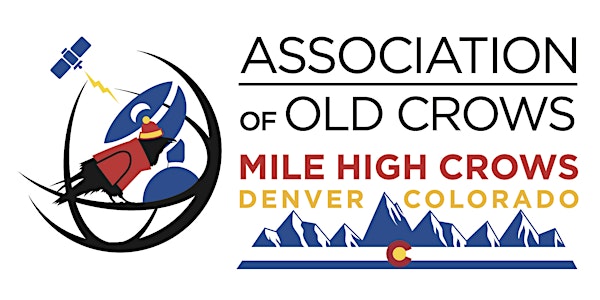
Emitter Geolocation Workshop
Date and time
Location
Ritchie School of Engineering and Computer Science, University of Denver
2155 East Wesley Avenue Room 301 Denver, CO 80208Refund Policy
Description
June 7-8, 2017
Preliminary Agenda
June 7
8:30-9:00: Arrival and breakfast
9:00-12:00 An Overview of Emitter Geolocation (Part 1)
12:00-12:45 Lunch
12:45-4:00 An Overview of Emitter Geolocation (Part 2)
June 8
8:30-9:00: Arrival and breakfast
9:00-12:00 Recent Advances in Emitter Geolocation (Part 1)
12:00-12:45 Lunch
12:45-3:30 Recent Advances in Emitter Geolocation (Part 2), computer excercise (tentative)
3:30-5:30 Happy hour at the Fermaentra Brewery and Taproom (cost not included)
Registration cost includes breakfast and lunch both days in addition to hard and soft copies of the presentation material. Discounts available for AOC members (15%), full-time students or military AOC members (20%), and military non-members (10%). Provide your AOC membership number at the door (you can join after registering provided you get your number before June 7 - see http://crows.org/membership/membership.html).
Please note that advanced registration is required!
Description
This two day workshop will cover the basics of emitter geolocation plus recent advances in the field. Emitter geolocation is the identification or estimation of the real-world geographic location of an object that emits some type of signal, such as a radar, mobile radio, RFID or even an acoustic source. In its simplest form geolocation involves the generation of a set of geographic coordinates and is closely related to the use of positioning systems.The techniques of emitter geolocation apply regardless of the spectral range of the emissions and typically involve estimation of the Time Difference of Arrival (TDOA) and/or Frequency Difference of Arrival (FDOA) among multiple spatially diverse detectors. Applications of emitter geolocation are also numerous ranging from asset tracking to traffic monitoring to defense uses such as battlespace management.
Day 1: An Overview of Emitter Geolocation
There is an abundance of literature in the field of emitter geolocation and it is often challenging to make sense of how the various methods and results are connected to each other and to the general field of estimation theory. This talk will provide a general framework within which common geolocation approaches can be formulated. We’ll start by discussing signal modelling issues and then see how classical estimation theory can be applied to develop insight into many of the common algorithms used in geolocation processing.
Day 2: Recent Advances in Emitter Geolocation
Classical emitter location methods have used a two-stage approach: first, estimate from received signals one or more location-dependent parameters and second, process those estimated parameters to estimate the emitter’s location. Recently a method has been proposed that replaces the two-stage processing with a single stage: perform maximum likelihood estimation of the location directly on the collected signal data. Even more recently we have developed a single-stage approach based on sparsity of emitters on a geolocation grid. This talk will present these approaches and discuss the pros and cons relative to each other and relative to the classical methods.
Biography
Dr. Fowler has over 17 years experience in signal processing algorithm development, with 8 of those spent in industry as an algorithm development engineer (1991 - 1999) and the remainder in academia at Binghamton University (State University of New York), where he is the director of the Emitter Location Research Group. He has extensive background in algorithm development for both single-platform location methods and multiple-platform location methods. In particular, he has made contributions in the areas of data compression for TDOA/FDOA location, task-driven location optimization of location systems via sensor selection and trajectory adjustment, mitigation of multipath in TDOA location, use of MEMS accelerometers to reduce impact of antenna vibration in location systems, excision of co-channel interference during computation of the cross-ambiguity function, exploitation of digital terrain data for location, design of digital receivers for signal interception, and extensive location performance prediction analysis. He has published over 45 research papers in journals and conference proceedings and has six patents.